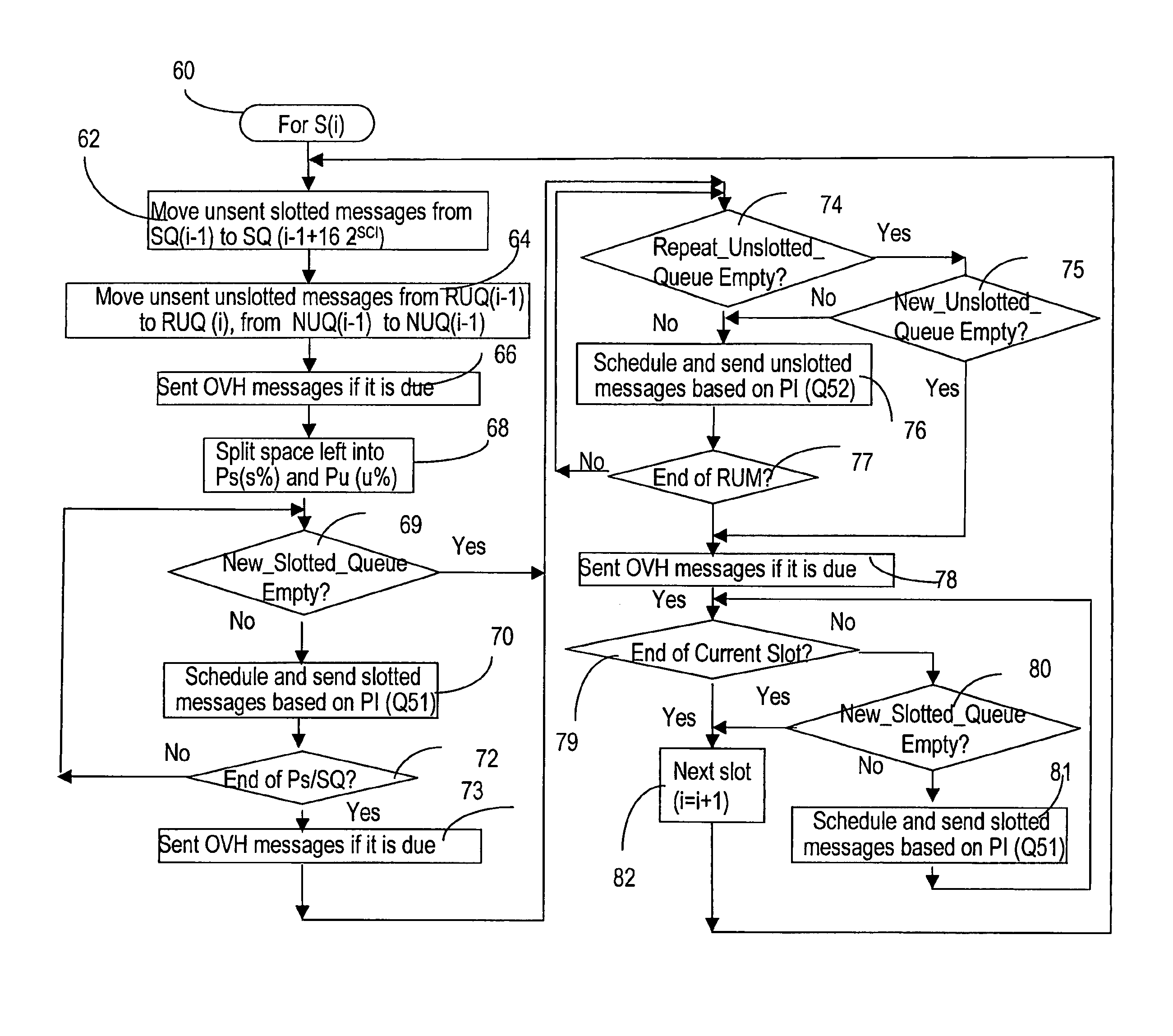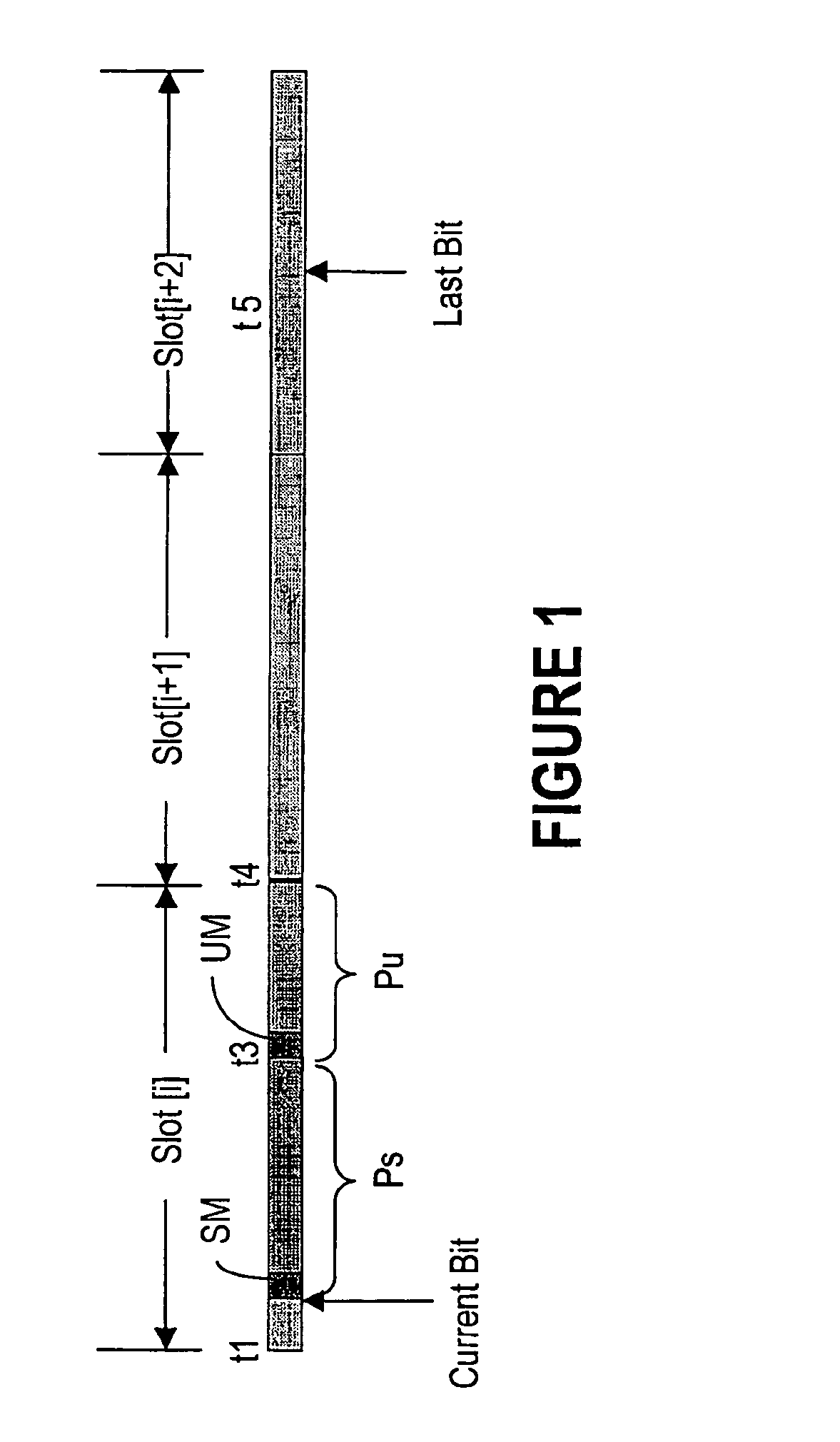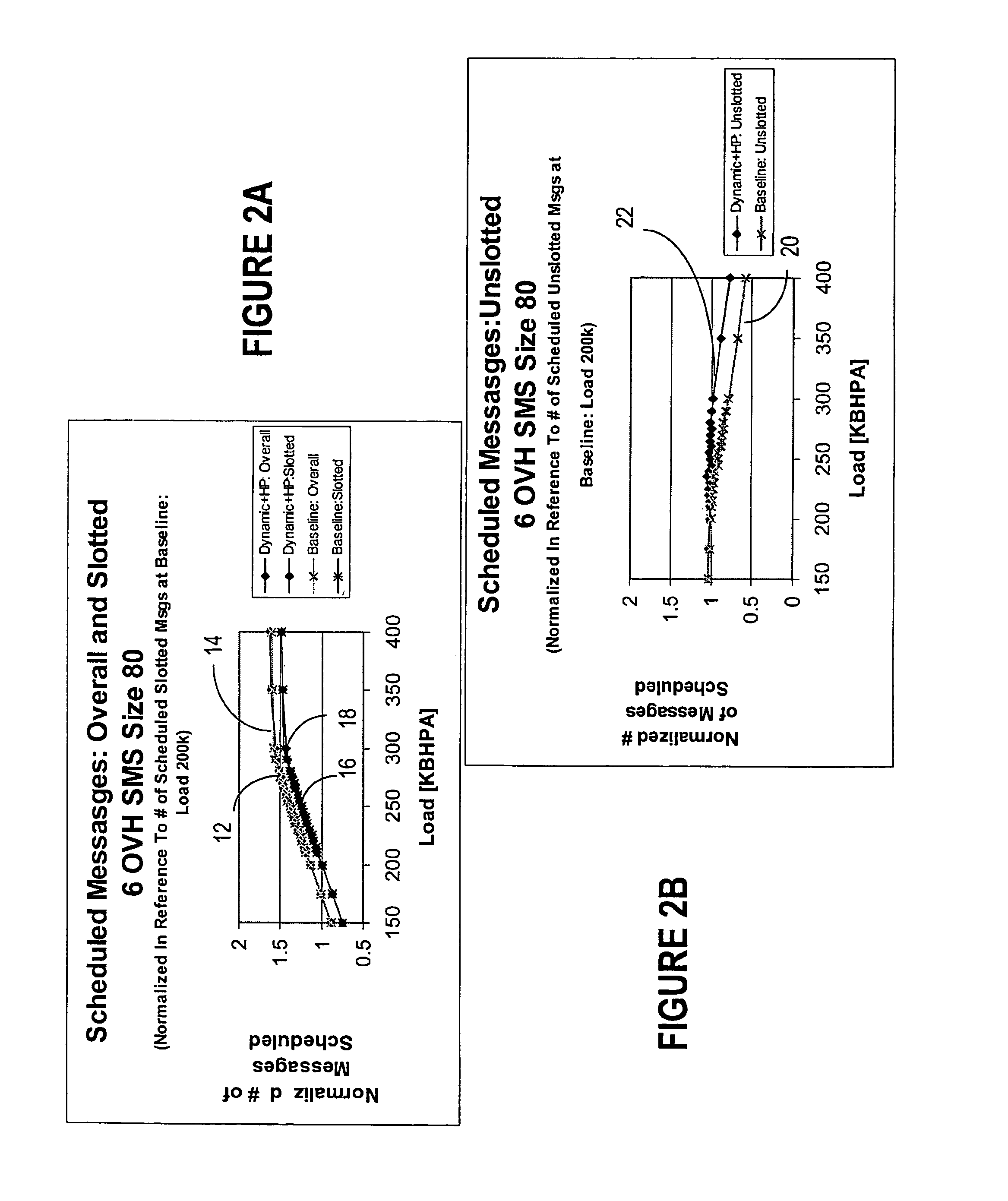Fair share scheduling method in a CDMA paging system
a paging system and fair share technology, applied in the field of radio communications systems, can solve the problems of not providing a balance between slotted and unslotted queue processing priorities, unable to resolve the unslotted message queue, and difficulty for a subscriber to gain access to the wireless system, so as to maintain the overall performance of the system, improve performance, and achieve significant performance gains
- Summary
- Abstract
- Description
- Claims
- Application Information
AI Technical Summary
Benefits of technology
Problems solved by technology
Method used
Image
Examples
Embodiment Construction
[0025]The invention will be described for the purposes of illustration only in connection with certain embodiments; however, it is to be understood that other objects and advantages of the present invention will be made apparent by the following description of the drawings according to the present invention. While a preferred embodiment is disclosed, this is not intended to be limiting. Rather, the general principles set forth herein are considered to be merely illustrative of the scope of the present invention and it is to be further understood that numerous changes may be made without straying from the scope of the present invention.
[0026]Some terms are defined next for convenience. The term “space” is used to identify the length of transmission time for a message. The term “fair-share” (FS) is used for the method according to the invention and specifies that time is allocated not only to the slotted messages, but also to the unslotted messages. The term “overall messages” refer t...
PUM
 Login to View More
Login to View More Abstract
Description
Claims
Application Information
 Login to View More
Login to View More - R&D
- Intellectual Property
- Life Sciences
- Materials
- Tech Scout
- Unparalleled Data Quality
- Higher Quality Content
- 60% Fewer Hallucinations
Browse by: Latest US Patents, China's latest patents, Technical Efficacy Thesaurus, Application Domain, Technology Topic, Popular Technical Reports.
© 2025 PatSnap. All rights reserved.Legal|Privacy policy|Modern Slavery Act Transparency Statement|Sitemap|About US| Contact US: help@patsnap.com



